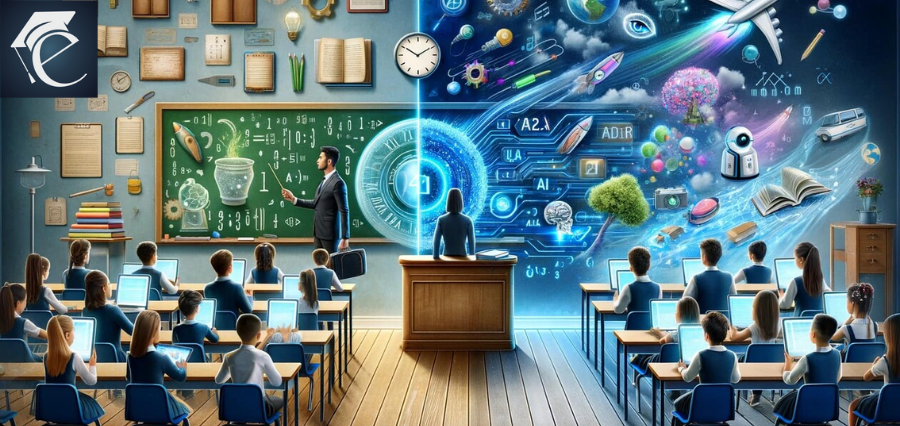- November 20, 2025

source:- LinkedIn
Using ( artificial intelligence ) ai in education is a big change in how people learn
and share information. It is changing the way schools work from a
one-size-fits-all model to a highly personalized, flexible, and effective
system that helps both students and teachers. AI isn't just a tool for
automating tasks; it's a partner that will change the purpose and structure of
the modern classroom.
One of the best things about AI in education is that it can give students truly
personalized learning experiences. The classroom has had a hard time with
different learning styles and speeds for hundreds of years. AI is the
technological answer
AI-powered adaptive learning systems look at a lot of data about how well a
student does, how quickly they learn, and what they don't know in real time.
The AI changes the content, level of difficulty, and teaching path for each
student based on this analysis. This makes sure that students don't get bored
with material that is too easy or frustrated with ideas that are too hard for
them to understand right now. It encourages mastery-based progression, which
means that students can only move on when they are sure they have a strong
understanding of the basics
Intelligent Tutoring Systems (ITS) are like having a tutor who is always
available. These systems give quick, specific feedback on tests and
assignments, which a human teacher can't do on a large scale. For example, an
ITS might give a student hints or scaffolding to help them solve a hard math
problem, or it might suggest related videos to help them understand something
better. This instant help makes students more interested and encourages them to
solve problems on their own.
AI is a strong tool that can help teachers be more productive and effective by
taking care of time-consuming administrative tasks so they can focus on
important interactions with students.
Teachers spend a lot of time each week on things that aren't teaching, like
grading, keeping track of attendance, and doing paperwork. Tools that use AI do
a lot of this work for you. Automated grading systems can grade objective tests
and even give early feedback on written work by checking for grammar and
structure. By making these tasks easier, AI gives teachers more time for
important things like coming up with new lesson plans, giving students
emotional and social support, and having deep, one-on-one conversations with
them.
Generative AI tools help teachers quickly make and customize educationalmaterials. AI can help teachers come up with a variety of practice problems, write lesson plans that fit specific learning goals, or even translate materials for classrooms with students who speak more than one language. This not only saves time, but it also makes it easier for the teacher to tailor lessons to different groups of students in the same class.
Even though AI in education has a lot of exciting potential, there are a lot of
big problems that need to be solved in a responsible way.
AI systems need a lot of data about students, like their grades, likes and
dislikes, and behavior, to work. There are serious privacy issues with the
collection, storage, and protection of this private student data. Also, if the
AI is trained on biased or incomplete datasets, it could make unfair
recommendations or assessments based on race, gender, or socioeconomic status,
which could make existing educational inequalities worse.
One big worry is that critical thinking skills might get worse, and people might lose the ability to connect with each other. If students depend too much on AI for answers or to write essays, they may lose their ability to think critically and come up with new ideas. Also, technology can't fully replace the rich social and emotional learning that happens when students and teachers interact with each other and with their peers. Teachers need to make sure that AI is used to help, not replace, human-led teaching and learning with others.
The path of AI in education suggests that being able to use AI will be an
important skill in the future. Students need to learn not only how to use AI,
but also how it works, what moral issues it raises, and how to use it as a
powerful co-pilot. The successful integration of AI will ultimately depend on a
balanced approach: using the technology to create unmatched personalization and
efficiency while always protecting the core values of human mentorship,
fairness, and the growth of well-rounded, ethical thinkers. In the future,
classrooms will be hybrid spaces where the machine's efficiency helps the
teacher's creativity.